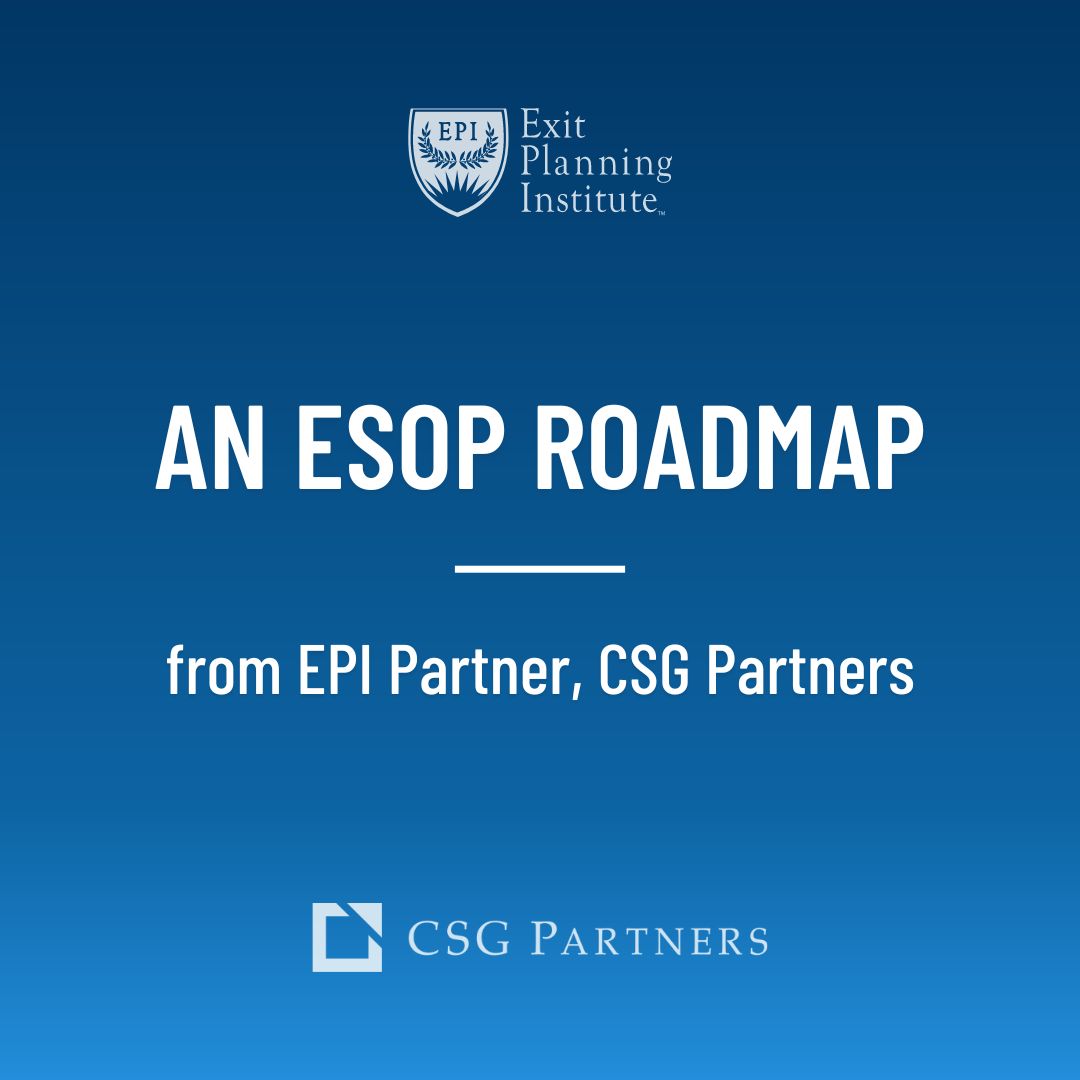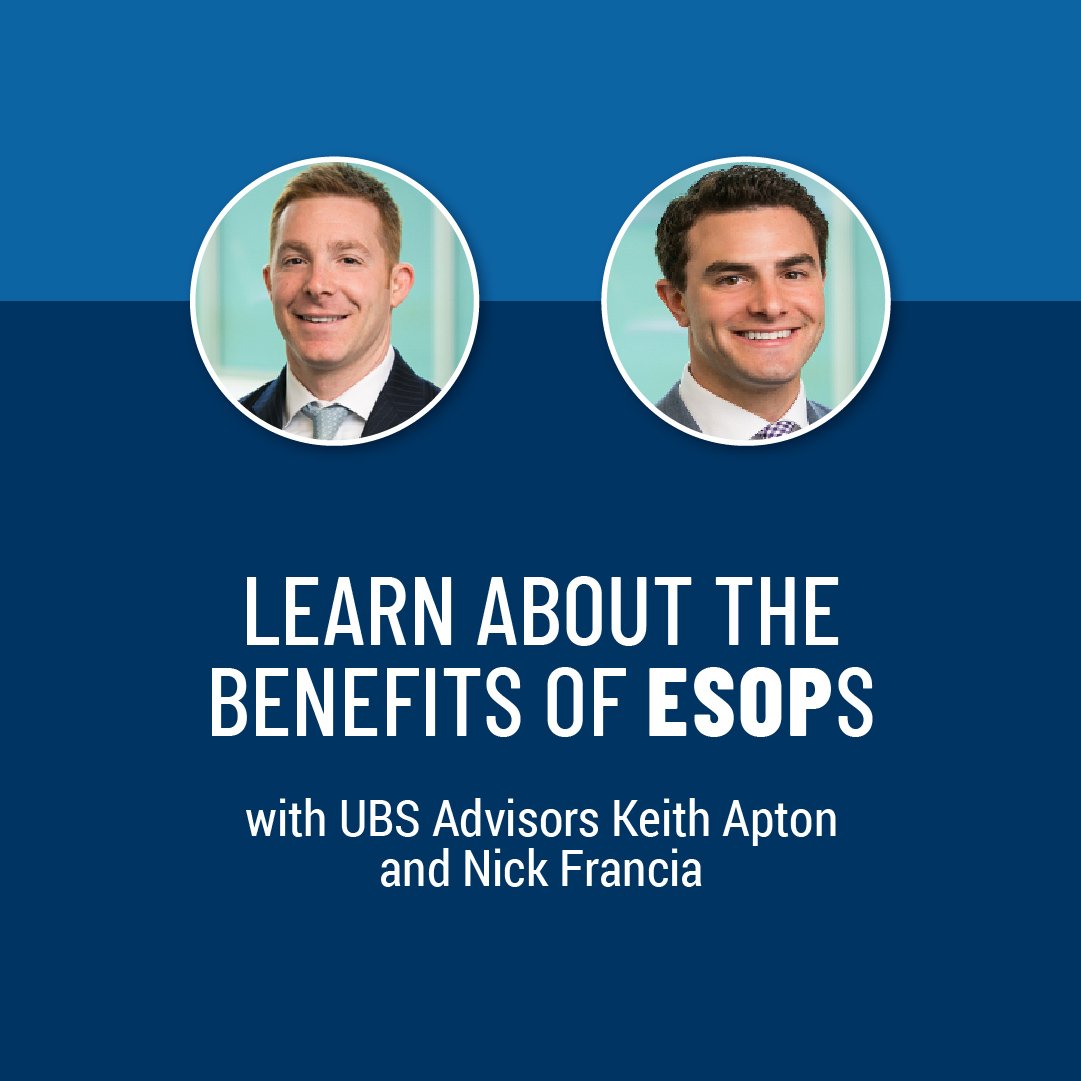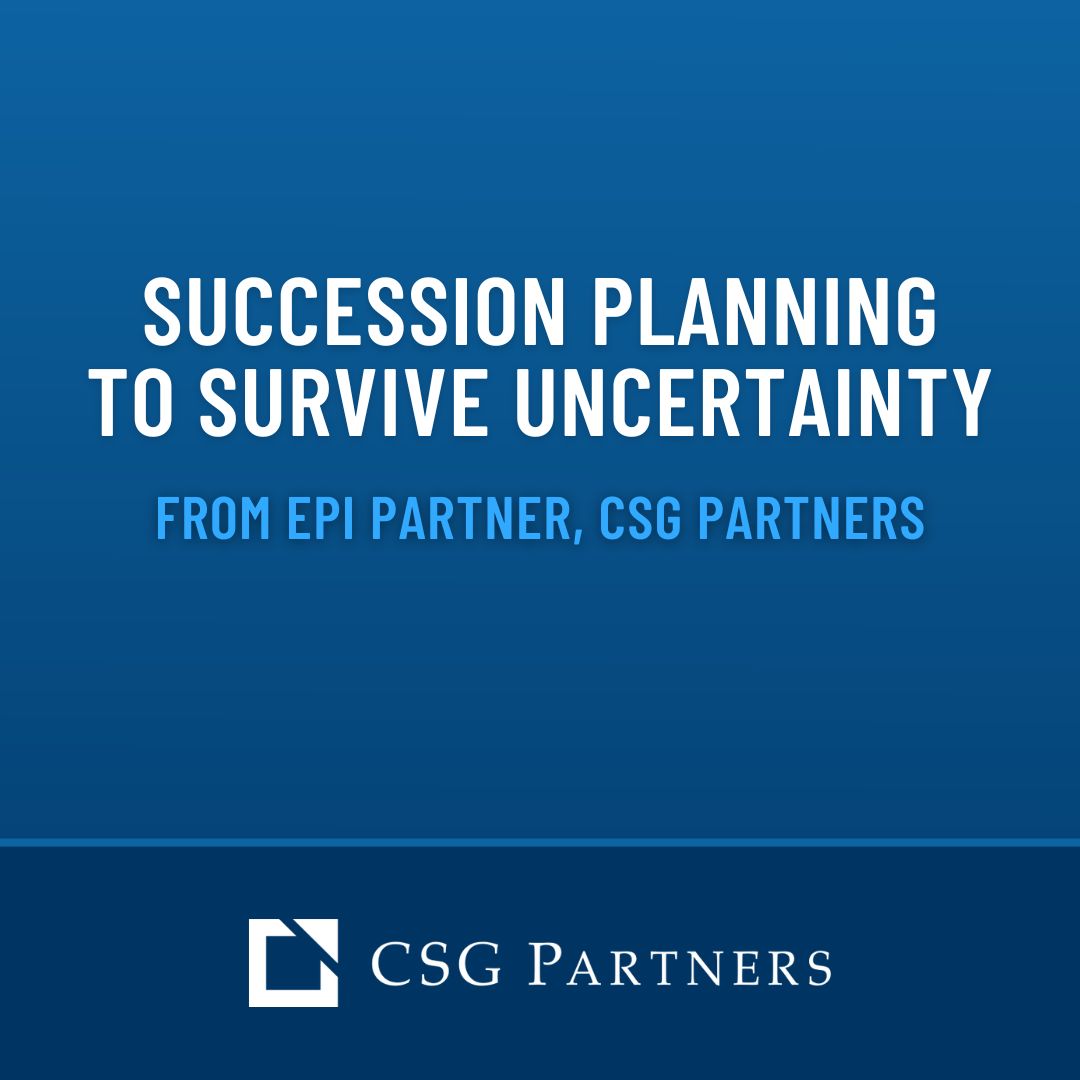
THE EXIT PLANNING BLOG
Keep up-to-date with exit planning, succession planning, industry trends, unique specialty insights, and useful content for professional advisors and business owners.
Share this
An ESOP Roadmap
by Colleen Kowalski on January 10, 2023

The following article was written by Michael Bannon and originally published on June 29, 2022, by EPI Partner, CSG Partners
The process behind forming and financing an employee stock ownership plan is unique among M&A transactions. Leveraged ESOPs can deliver profound benefits, but careful planning and execution are key. When companies blindly rush to put plans in place, they risk lengthy delays, unrealized goals, and broader regulatory exposure.
As a result, employee ownership strategies demand a “measure twice and cut once” mentality. Before committing to an ESOP transaction, stakeholders should understand how a plan functions, internalize the pros and cons and determine whether the potential upside is worth the effort. A roadmap to employee ownership can help closely-held companies efficiently reach the right destination.
11 Steps to a Successful ESOP Transaction
The following isn’t necessarily the road taken by all companies, and the journey doesn’t always end in a completed transaction. But this framework offers a disciplined approach to employee ownership consideration and realization.
1. Do your employee ownership homework.
ESOPs are complex, and misconceptions are commonly held. Before you talk with an advisor, let alone begin a transaction process, do some studying. In addition to our resource library, the National Center for Employee Ownership offers a broad range of educational materials. You’ll also find centers for ESOP scholarships at several major institutions.
2. Get transaction-ready.
Preparation is critical to any M&A transaction. ESOPs are no different. When a company has audited or reviewed financials, documented business practices, and current quality of earnings reports, it’s better positioned to act on opportunities and close deals in a timely manner. My colleague, Richard Harmon, has written extensively about this often-overlooked step in the transaction process.
3. Consult an ESOP advisor.
As mentioned, employee ownership transactions are nuanced. Structuring and financing considerations abound, and multiple federal regulatory bodies provide oversight. Even if your interest is purely exploratory, it’s important to talk with an expert whose primary focus is employee ownership.
An experienced ESOP investment banking advisor likely completes multiple transactions a year, is well-versed in financial modeling and analysis, and has extensive access to third-party capital sources. They should be capable of managing a transaction from end to end.
4. Run a feasibility study.
Detailed business analytics, combined with a clear understanding of stakeholders’ goals, help ground an ESOP process. A well-crafted preliminary analysis synthesizes these objective and subjective data to answer key questions:
- What is a company’s anticipated fair market value?
- Is there a sale percentage and corporate structure that maximizes an ESOPs potential benefits?
- How does an optimized ESOP compare to other M&A options (status quo, private equity, etc.)?
- What are the potential financing options?
- What do all stakeholders stand to gain or lose in a transaction?
- How much will it cost to implement and maintain the proposed plan?
Answers should be presented in writing and in open conversation. Advisors can be expected to explain assumptions, field questions, enhance their analysis, and present their findings to multiple stakeholder audiences.
A productive feasibility study instills confidence and informs an educated decision to pursue an ESOP strategy. Ideally, it will also evidence compatibility between a company and an advisor.
5. Engage a transaction advisor.
When a company opts to move ahead with a leveraged ESOP, it will generally engage an advisor to quarterback the transaction. This is often the same individual or firm that led the prior feasibility study, but that’s not a given. A strong advisor-client relationship is a key driver of success, and a good fit is vital. Once both parties agree on the scope and terms of an engagement, the real heavy lifting begins.
6. Begin a due diligence process.
A modicum of corporate information is needed to complete a feasibility study. Due diligence for a formal transaction is more rigorous. In addition to tax returns, financial statements, and payroll data, an advisor should seek to fully understand how a business operates, its performance drivers and projected outlook, and broader market dynamics.
This process fully informs all ESOP valuation, structuring, and financing considerations. Clear documentation and easy access to management team members for interviews and follow-up questions can help expedite the process.
7. Draft a confidential informational memorandum (CIM).
This detailed report summarizes a company’s history, finances, management, and outlook. A product of the due diligence effort, the CIM is primarily written for two audiences: potential lenders and the ESOP trustee. As in any M&A transaction, all parties will ultimately perform their own due diligence, but a comprehensive, well-crafted CIM can help contextualize opportunities and engender trust between deal partners.
8. Raise capital from institutional lenders.
While a leveraged ESOP can be entirely seller-financed, these transactions are often partially or completely funded with third-party debt. Doing so helps the selling shareholders secure a measure of liquidity at closing.
When companies seek third-party financing, an ESOP investment banking advisor may begin a competitive capital raise process by reaching out to a range of potential lenders and circulating the CIM to interested parties. Once preliminary term sheets are secured, an advisor can analyze opportunities, lead subsequent lender negotiations, and help its client select a preferred financing package.
9. Hire ancillary professionals.
Most companies will hire an attorney that specializes in ESOPs to work alongside their corporate counsel. Considering the ERISA-oriented rules and regulations of plan formation and maintenance, having a subject matter expert on your legal team can be extremely valuable.
Next, a company will retain the services of an employee trustee. In general, the newly hired ESOP counsel will help form a committee of key employees to interview, select, and engage a third-party, institutional fiduciary.
The trustee represents employees’ interests throughout the transaction process and afterward. To do so, they will independently hire legal counsel to represent the employee stock ownership trust, as well as a valuation firm to run detailed due diligence and support transaction negotiations.
10. Negotiate a deal.
Once an ESOP trustee completes their due diligence process and finalizes an assessment of the company’s fair market value, both parties will come together to hammer out a transaction. The company (led by its ESOP advisor) will make a formal offer to sell a portion or all shareholder equity, and the trustee will likely counter.
Remember, the trustee has a fiduciary obligation to pay no more than fair market value for company stock. Striking a deal isn’t a foregone conclusion. Either side can walk away from the negotiations.
11. Close the transaction.
If an agreement is reached, the deal moves to a final stage. Transaction and ESOP plan documents are finalized. Credit agreements for third-party and seller financing are also codified. Once all the paperwork is completed, both parties set a closing date. The close is similar to any other M&A transaction: after all documentation is signed, the employee trust receives shares in exchange for payment.
ESOP formations demand planning, patience, and protocol.
Leveraged employee stock ownership plan transactions can take months to complete. Timing is often predicated on deal size, complexity, financing needs, and the speed at which all due diligence activities are completed. So, if you’re contemplating an employee ownership strategy, be prepared for an extended journey.
A successful ESOPs can be transformative for closely-held companies, employees, and owners. But the potential costs and complexities must be considered and internalized. A thoughtful, disciplined process can be the difference between an uncertain transaction and an optimized plan.
Learn more from CSG Partners
Join CSG Partners’ Lawrence Kaplan for a concise presentation and an extensive live Q&A. Whether this is your introduction to employee stock ownership plans – or if you have specific questions about tax benefits, succession options, and wealth planning considerations – this is your opportunity to learn from a nationally-recognized ESOP expert.
Register for the January 17 webinar here!
Follow our socials for more exit planning content and strategies.
Share this
- Blog (544)
- CEPA (419)
- exit planning (249)
- CEPA community (187)
- Business Owner (170)
- Exit Planning Summit (95)
- EPI Chapter Network (89)
- Value Acceleration Methodology (79)
- Exit Planning Partner Network (76)
- EPI Announcement (49)
- Content (48)
- Webinars (37)
- Excellence in Exit Planning Awards (33)
- Marketing (30)
- 2024 Exit Planning Summit (28)
- 5 Stages of Value Maturity (26)
- Books (24)
- EPI Academy (24)
- EPI Team (22)
- Exit Planning Teams (22)
- Leadership (21)
- 2023 Exit Planning Summit (20)
- family business (20)
- women in business (19)
- Intangible Capital (18)
- Exit Options (17)
- Black Friday (16)
- CPA (15)
- Walking to Destiny (15)
- State of Owner Readiness (14)
- Chapters (13)
- Chris Snider (12)
- National Accounts (12)
- Small business (12)
- charitable intent (12)
- personal planning (12)
- Financial Advisors (11)
- Season of Deals (9)
- 5 Ds (8)
- About us (8)
- Podcast (8)
- Insiders Bash (7)
- Scott Snider (7)
- Christmas (6)
- Exit Planning Content Library (6)
- Case Studies (5)
- Owner Roundtables (5)
- Value Advisors (5)
- financial planning (5)
- Awards (4)
- Circle of Excellence (4)
- Exit & Succession (4)
- Five Ds (4)
- Three Legs of the Stool (4)
- executive training (4)
- Owners Forum (3)
- author (3)
- forbes (3)
- DriveValue (2)
- EPI Thought Leadership Council (2)
- Exit Is Now Podcast (2)
- Peter Christman (2)
- Veteran (2)
- Whitepapers (2)
- Business Owners Forum (1)
- SOOR (1)
- business consultants (1)







